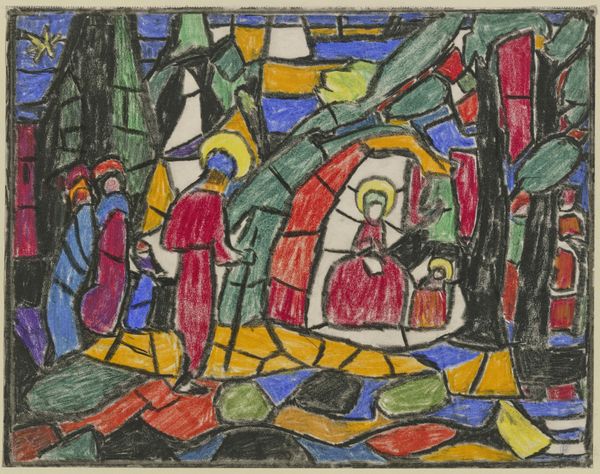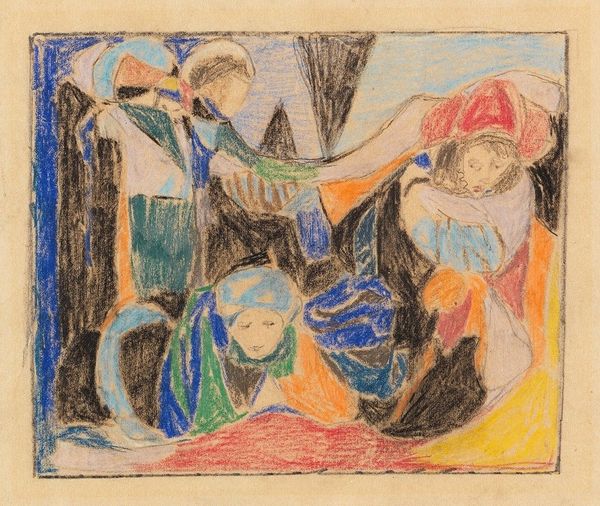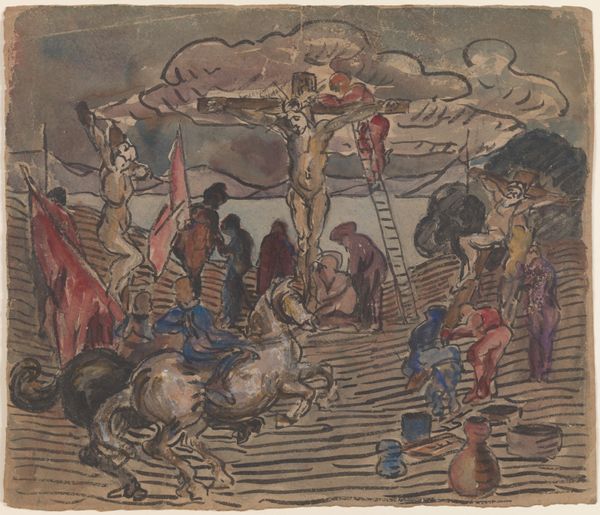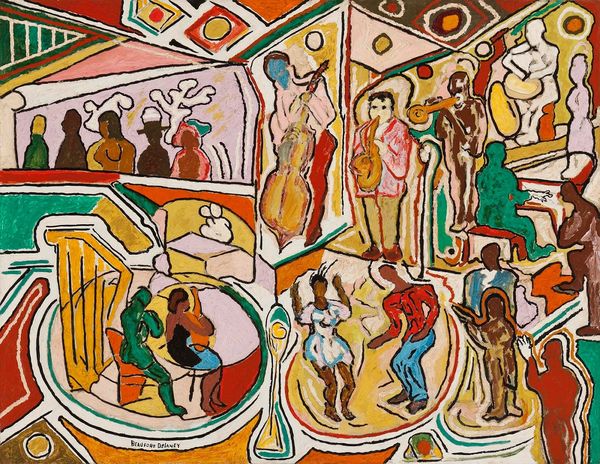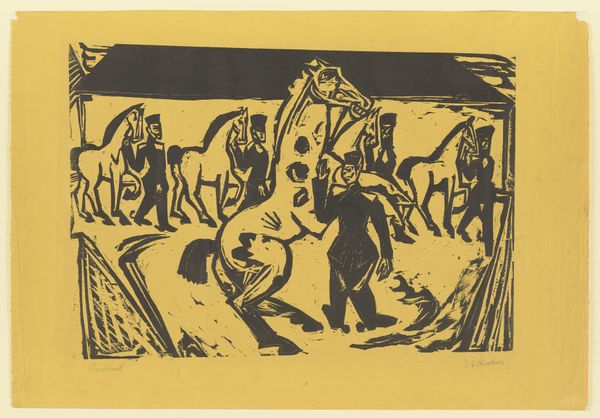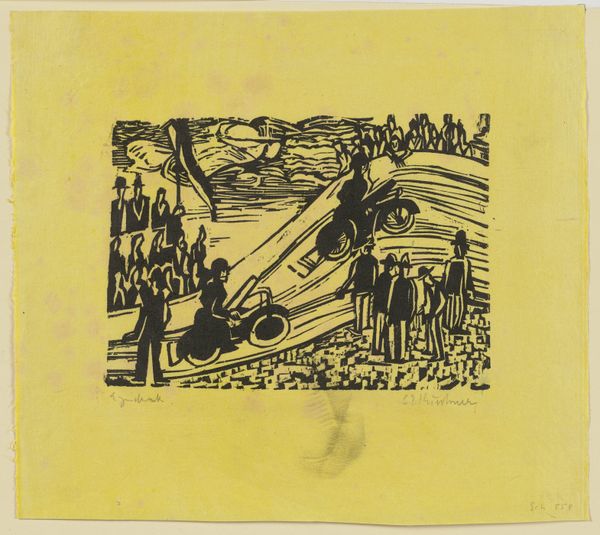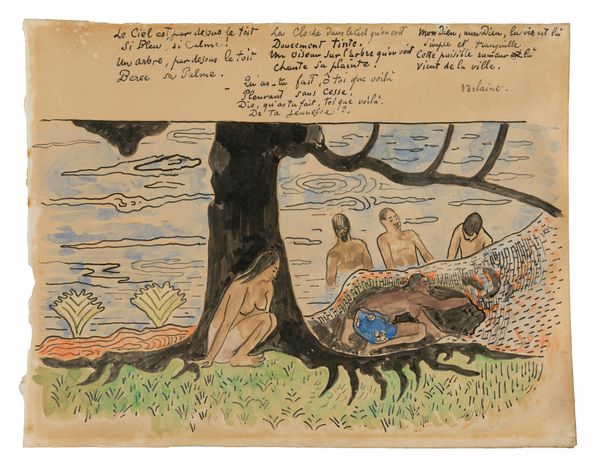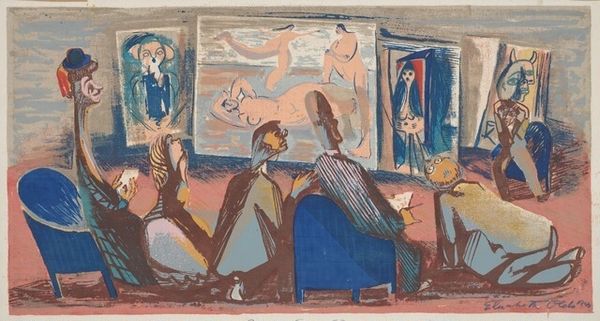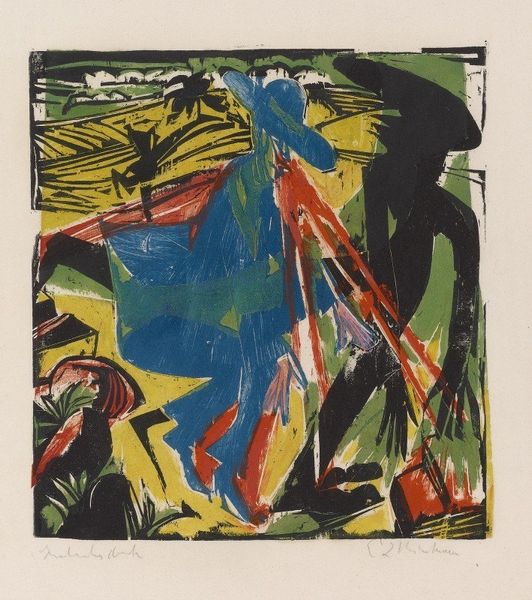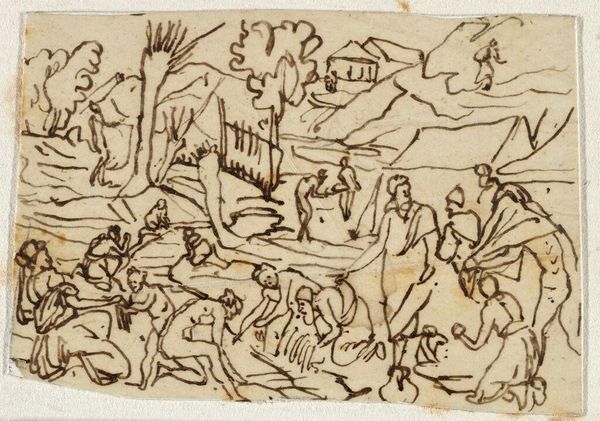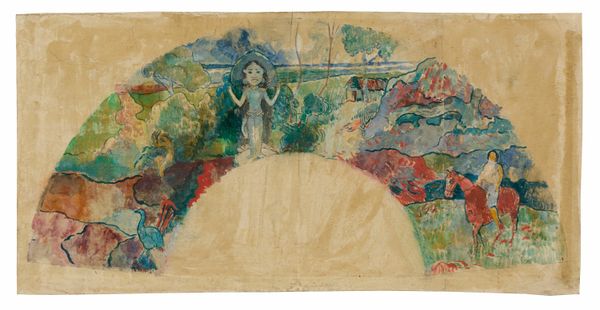
drawing, paper
#
17_20th-century
#
drawing
#
landscape
#
german-expressionism
#
figuration
#
paper
#
german
#
expressionism
#
history-painting
Copyright: Public Domain
Curator: Ernst Ludwig Kirchner's drawing from 1927, titled "The Life (Hagemann Design)," currently residing at the Städel Museum, presents a vibrant tableau on paper. Editor: My first impression? It's chaotic yet captivating. The bold colors and fractured forms immediately draw you in, but it's hard to pinpoint exactly what’s happening. A rather unsettling carnival. Curator: The execution reflects the Expressionist movement's embrace of intense emotionality and subjective experience. The application of gouache here feels critical. What statement about craft, value, and intent might we find there? Editor: Perhaps the hurried and frenetic linework echoes the societal anxieties of interwar Germany? Kirchner lived through a period of immense upheaval. The layering of figures against a stylized landscape almost feels like a history painting attempting to capture this state. I imagine the galleries hosting such pieces would themselves provoke heated responses from the German public at the time. Curator: Absolutely. Consider how the physical properties of the medium also inform the experience. The absorptive nature of paper paired with the opaque pigment suggests an immediacy—a raw, unfiltered outpouring of emotion. This choice moves the piece beyond simple illustration and towards a more primal form of expression that is both immediate and long-lasting given the institution now housing the piece. Editor: I'm also struck by the panel-like arrangement. Is it referencing earlier altarpieces? A theatrical stage design, as indicated in the title? It creates a narrative sequence, though its cohesiveness remains ambiguous. Curator: The piece’s engagement with visual conventions feels particularly revealing considering Kirchner’s larger body of work. Editor: Ultimately, the piece prompts us to contemplate the artist's emotional response to a specific historical period. What choices might have been available in terms of material or public outlet for such a perspective? Curator: Indeed, considering its historical context, artistic process, and materiality helps reveal some interesting approaches to navigating the complexities of life, as interpreted through the lens of German Expressionism. Editor: Right, there are several layers of thought embedded in that striking configuration of color and composition.
Comments
stadelmuseum about 2 years ago
⋮
It was in the so-called Hagemann Design that Kirchner arrived at the carpet’s final colour scheme. The composition corresponds almost entirely to that of the finished carpet, which was in production from 1927 onwards (Städel Museum, Inv. No. 2111). Even if minor details are missing, the study already conveys the symmetrical and rhythmic pictorial structure with its centrally placed geometric form, mirrored pairs of figures and rows of mountain peaks. With regard to content and composition alike, this work manifests Kirchner’s ideal vision of the peaceful coexistence of man and nature.
Join the conversation
Join millions of artists and users on Artera today and experience the ultimate creative platform.
